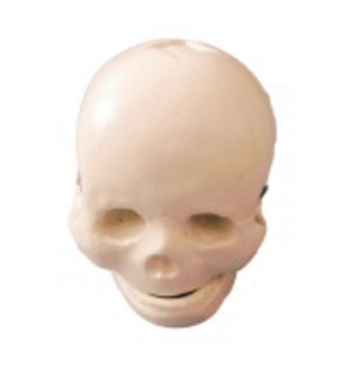13-05-2024
ADA MED SUPPLY LIMITED
Article tag: baby skull models skull models
Infant skull model plays an important role in medical education and training, its intuitive and realistic characteristics enable medical staff and students to have a deeper understanding of the structure and characteristics of infant skull. Here are some suggestions on how to use baby skull models for medical education and training:

First, by showing the baby skull model, the teacher can explain the composition and characteristics of the baby skull to the students in detail. Models usually include paired parietal bones, temporal bones and unpaired occipital bones, sphenoid bones, frontal bones, as well as nasal bones and maxilla bones of the facial skull. Teachers can combine the model so that students can more intuitively understand the difference between the infant skull and the adult skull, such as the infant skull is not fully developed, and there is a skull between the skull to separate the parietal bone, occipital bone and other bone tissues.
Secondly, the fontanel part of the infant skull model is an important teaching point. Teachers can guide students to observe the position and characteristics of the anterior and posterior fontanels and explain their role in the growth and development of infants. Through the model, students can learn that the fontanel is the part of the baby's skull that is not fully closed, and they allow the baby's brain tissue to receive sufficient nutrients and oxygen as it grows.
In addition, teachers can use the baby skull model for practical operation training. For example, the scenario of an infant's skull injury or deformity is simulated, and students are allowed to make diagnosis and treatment plans according to the model. This practical operation can help students better grasp the theoretical knowledge and improve their clinical coping ability.
In medical training, baby skull models can also be used to simulate real surgery scenarios. Through simulated surgical operations, students can have a deeper understanding of the process and techniques of cranial surgery for infants and improve their surgical skills and clinical practice.
In short, the baby skull model is an indispensable teaching tool in medical education and training. By displaying models, explaining structural features, conducting practical operation training and simulating surgical scenarios, students can better grasp the relevant knowledge and clinical skills of baby skull and lay a solid foundation for their future medical career.